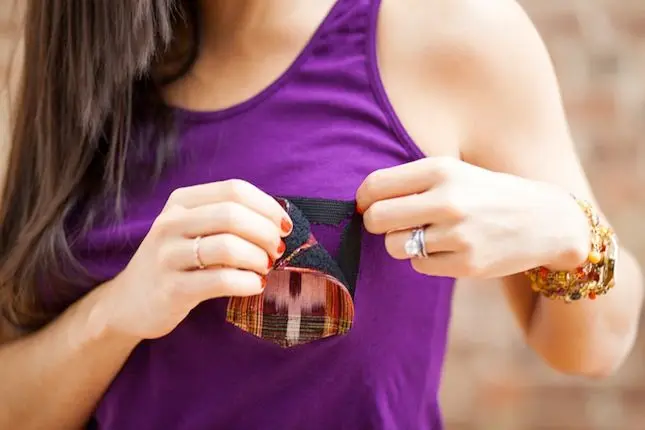Clothing has always been about more than style—it’s also about function and accessibility. From zippers to elastic bands, each innovation has made getting dressed a little easier. Yet one of the most overlooked upgrades in clothing design is Velcro. Simple, strong, and versatile, Velcro makes clothes easier to put on and take off for people of all ages and abilities. Whether used in children’s shoes, adaptive apparel, or outerwear, it provides comfort and independence where other fasteners might fail. Even large rolls of bulk velcro can be used by designers and tailors to create practical garments that are easy to wear and maintain.
A Small Innovation with a Big Impact
Velcro was originally inspired by nature—the tiny burrs that cling to fabric and fur after a walk in the woods. This simple hook-and-loop system has since become one of the most useful fastening technologies in the world. When applied to clothing, it transforms everyday tasks.
For someone with arthritis, visual impairments, or limited dexterity, traditional fasteners like buttons, hooks, and zippers can be difficult or even painful to use. Velcro, by contrast, requires only gentle pressure to close and a light pull to open. It doesn’t rely on precision or strength, which means getting dressed can once again be an independent, stress-free experience.
Independence Through Simplicity
One of the greatest benefits of Velcro clothing is the sense of autonomy it restores. Dressing is a deeply personal act—it’s how we prepare ourselves for the world. For children learning self-care skills or adults managing age-related mobility issues, Velcro provides the perfect balance between functionality and dignity.
Adaptive fashion has embraced Velcro closures for this very reason. Shirts that look like they have buttons but actually close with Velcro strips, or pants that fasten at the side rather than the front, allow people to maintain their personal style without compromise. In hospitals and senior living facilities, caregivers often prefer Velcro clothing because it makes dressing and undressing quicker, more comfortable, and less intrusive for patients.
Comfort Without Compromise
Velcro also enhances comfort by reducing pressure points and bulk. Clothing designed with adjustable Velcro straps or waistbands can be customized for a perfect fit, especially helpful for people whose body shape changes due to medical conditions or swelling.
It’s not just for medical or adaptive use, though. Everyday clothing like jackets, sneakers, and athletic gear increasingly use Velcro closures for ease and flexibility. Children’s shoes with Velcro straps, for instance, eliminate the hassle of laces, while sportswear benefits from quick fastening and secure adjustments during movement.
For those who care about durability, modern Velcro is made from soft, flexible materials that don’t scratch skin or snag fabrics, ensuring that comfort stays a priority.
A Designer’s Best Friend
From a creative standpoint, Velcro opens new possibilities for designers. Its adaptability allows for hidden closures, removable panels, or adjustable fits that can change with the wearer’s needs. Tailors and clothing manufacturers experiment with various textures and fastening strengths, from lightweight fabrics to rugged outdoor materials.
Velcro can also simplify clothing production by replacing multiple buttons or zippers with one streamlined closure. This saves time during manufacturing and makes repairs much easier if something wears out. Sustainability-minded designers appreciate that Velcro extends a garment’s life by making it easier to fix or adjust instead of discard.
Safety and Functionality
Beyond convenience, Velcro adds an important layer of safety for certain groups. In children’s wear, it reduces choking hazards since there are no detachable buttons or small parts. For seniors or people recovering from surgery, it prevents unnecessary strain from twisting or reaching to fasten traditional closures.
Outdoor enthusiasts and workers also rely on Velcro for gear that must stay secure yet be quickly accessible. Adjustable cuffs, vests, and gloves often use Velcro so that wearers can tighten or loosen items even while wearing gloves or in low light. The Occupational Safety and Health Administration (OSHA) recognizes the importance of adjustable, secure clothing features for reducing workplace hazards and improving comfort during extended wear.
Maintenance and Durability
Velcro is built to last, but like any fabric component, it benefits from care. Over time, lint and debris can collect in the hooks, weakening the grip. Regular cleaning with a fine-toothed comb or soft brush keeps it performing well. When laundering, close Velcro strips to prevent snagging other fabrics.
Properly maintained, Velcro fasteners can last for thousands of uses, maintaining their strength and flexibility for years. This makes them not only practical but also cost-effective for long-term wardrobe use. The National Institute of Standards and Technology (NIST) has published research showing that synthetic fastening materials like Velcro retain functionality across extensive wear cycles, outperforming traditional closures under repeated stress.
Inclusivity Through Innovation
Perhaps the most meaningful impact of Velcro in fashion is how it promotes inclusivity. Clothing is a daily necessity, yet for many, it can also be a source of frustration or dependence. Velcro quietly removes barriers, giving people the freedom to dress with confidence, comfort, and self-sufficiency.
It’s a simple idea that solves complex problems—proof that thoughtful design can empower people of all abilities. Whether in children’s shoes, athletic wear, or adaptive clothing for seniors, Velcro transforms fashion into something more humane and practical. It’s a reminder that innovation doesn’t have to be flashy to make life better. Sometimes, it just needs to stick.
Also Read-Fashion Handbags for Fall 2025: Styles, Trends, and Smart Shopping

